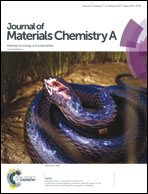Defect interactions and the role of complexes in the CdTe solar cell absorber
Abstract
While the electrical and optical properties of most crystalline materials are determined by the point defects, the association of these defects into complexes may further alter material properties, introducing new important phenomena. The properties of isolated point defects in CdTe have attracted significant research efforts, yet understanding of the complex defects in this material remains insufficient. This paper investigates the thermodynamic aspects of defect association in chlorinated copper-doped CdTe absorbers from first principles, using a supercell approach with the range-separated hybrid exchange–correlation functional. Based on the complex association energies calculated for 76 defect reactions, we propose the most favorable pair complexes formed in Cl- and Cu-doped CdTe absorbers. Most of the complexes studied in this work appear to be harmful for p-doping and may be responsible for the performance instabilities observed in CdTe devices. We also discuss a plausible passivation mechanism that mitigates TeCd recombination centers during Cl treatment and consider the formation of larger defect clusters and segregation of the point defects on extended defects.



 Please wait while we load your content...
Please wait while we load your content...